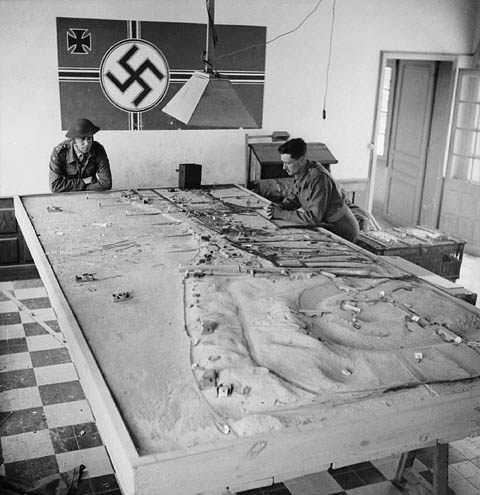Cracking the Walls of Fortress Europe
This publication is available upon request in alternate formats.
PDF Version
The Second World War was fought between two groups of countries. On one side were the Axis Powers, including Germany, Italy and Japan. On the other side were the Allies. They included Canada, Britain, France, Australia, New Zealand, India, China, the United States of America and, later, the Soviet Union.
Germany was ruled by Adolf Hitler and the Nazi Party. Hitler wanted Germany to control Europe. In 1939, Germany invaded Poland and this is how the Second World War began. By the summer of 1940, the Germans had also conquered much of Western Europe, including Holland, Belgium, France, Denmark and Norway.
The Allied countries knew that victory could only be achieved on land by driving the Nazi forces from the countries they occupied and finally invading Germany itself. The Allies began planning for a massive assault on occupied France. Five beaches were selected for the location of the landings, and were given code names. Two beaches were for the Americans, two beaches were for the British, and one beach, named Juno, was for the Canadians to attack.
In preparation for the invasion, the Allies gathered troops and equipment in southern Britain. Ground, sea and air forces rehearsed endlessly to make sure their timing was perfect. To defend their conquered territory, the Germans heavily fortified the coast. The coast was littered with German land mines, barbed wire, heavy artillery batteries and machine-gun nests and troops. There were also anti-tank walls, shelters constructed of thick concrete, anti-aircraft guns and many other types of defensive positions. For these reasons, the coastline from Denmark to the south of France was known as "Fortress Europe".
In the early morning darkness of June 6, 1944, the time had come. Some 130,000 Allied soldiers, travelling in a massive fleet of ships, crossed the English Channel to attack an 80-kilometre stretch of the Normandy coast of France.
The first wave of the attack began with the paratroopers, including more than 450 Canadians, who were to destroy or capture bridges and other strategic targets to disrupt the enemy defenders. The next stage saw thousands of warplanes drop bombs on German defences. Soon after, warships began to bombard the beaches from off shore. Following this, the main invasion force carrying troops, weapons, tanks, and equipment approached the beaches of Normandy, where it encountered enemy fire.
Some 14,000 Canadians began the assault along their sector of the coast—Juno Beach. Their mission was to secure the beach, and then push inland. Although only one Canadian unit reached its D-Day objective, the first line of German defences had been smashed and Canadian troops had progressed further inland than any of their Allies. Hitler’s Fortress Europe was cracked. It was a remarkable achievement, but it was costly. By the end of D-Day, 340 Canadians had given their lives. The assault at Juno Beach is significant to Canadians because it demonstrated the courage and sacrifice of our men in uniform and is a point of pride for our country. Against difficult odds on D-Day, the Canadians advanced against the enemy’s best troops. However, this was only the beginning of the tough Battle of Normandy to follow. On August 25, 1944, Paris was liberated by the Allies, finally bringing the Normandy Campaign to an official close. Another nine months of hard fighting would be needed, however, before the Allies achieved a final victory in Europe in the spring of 1945.
- Date modified:





